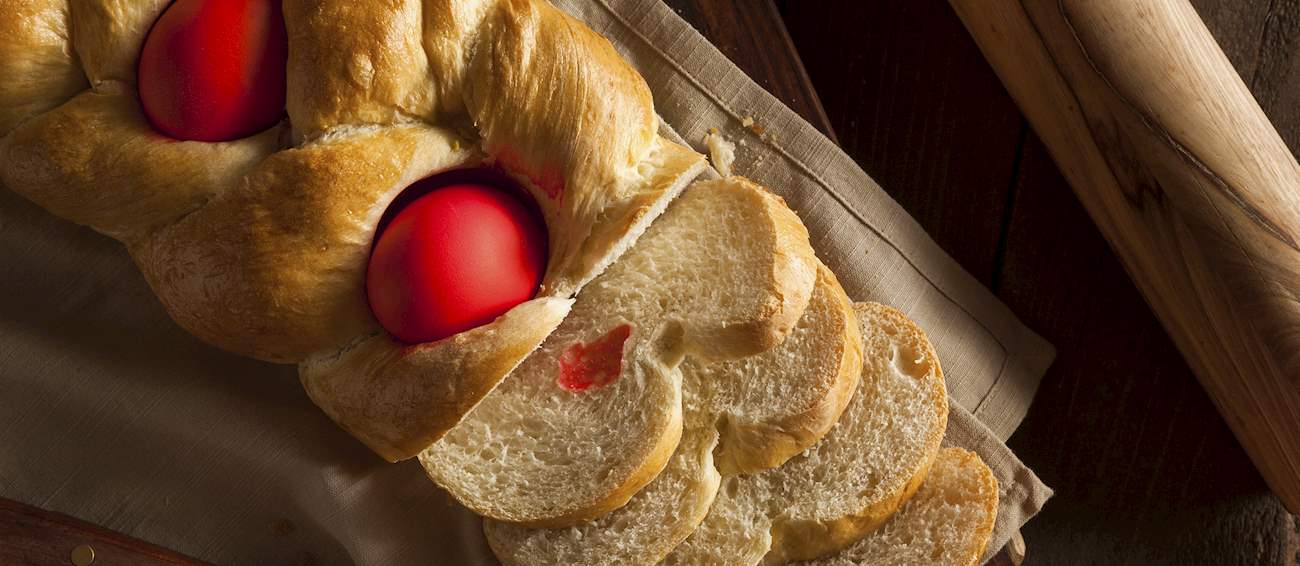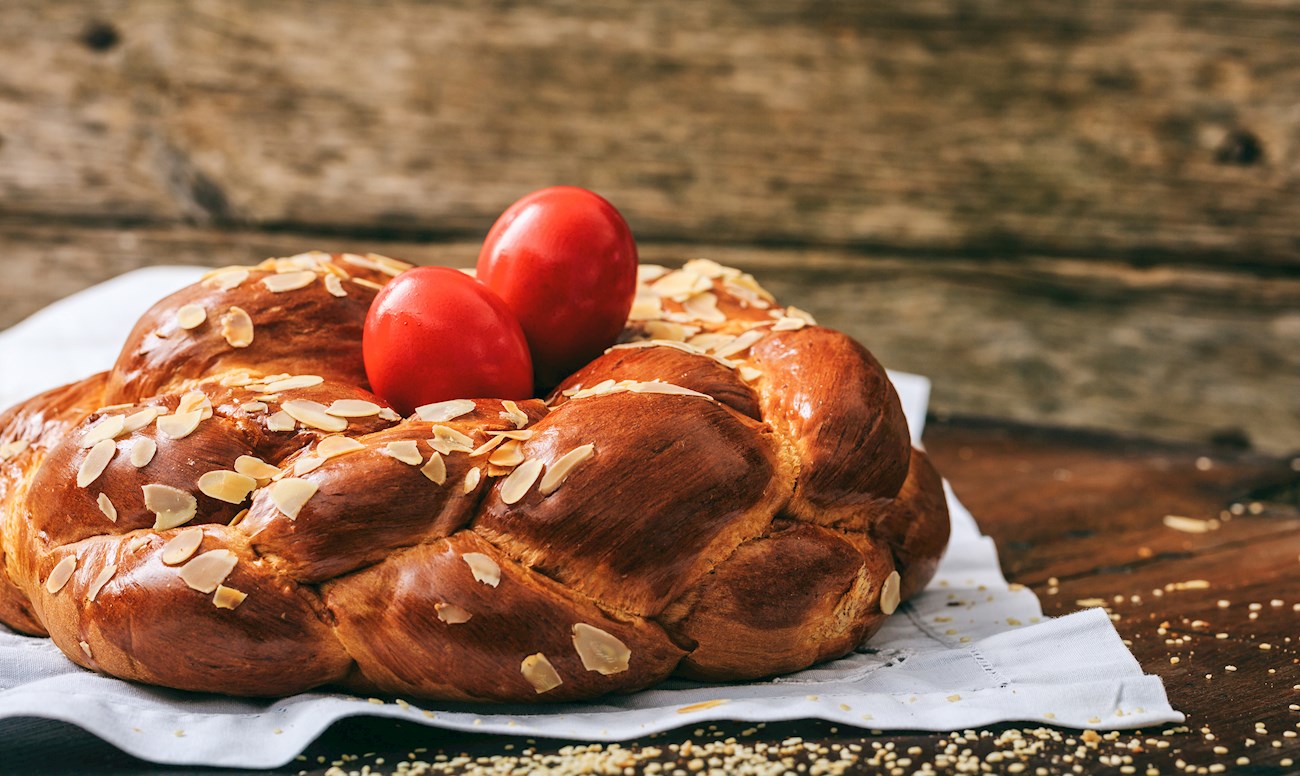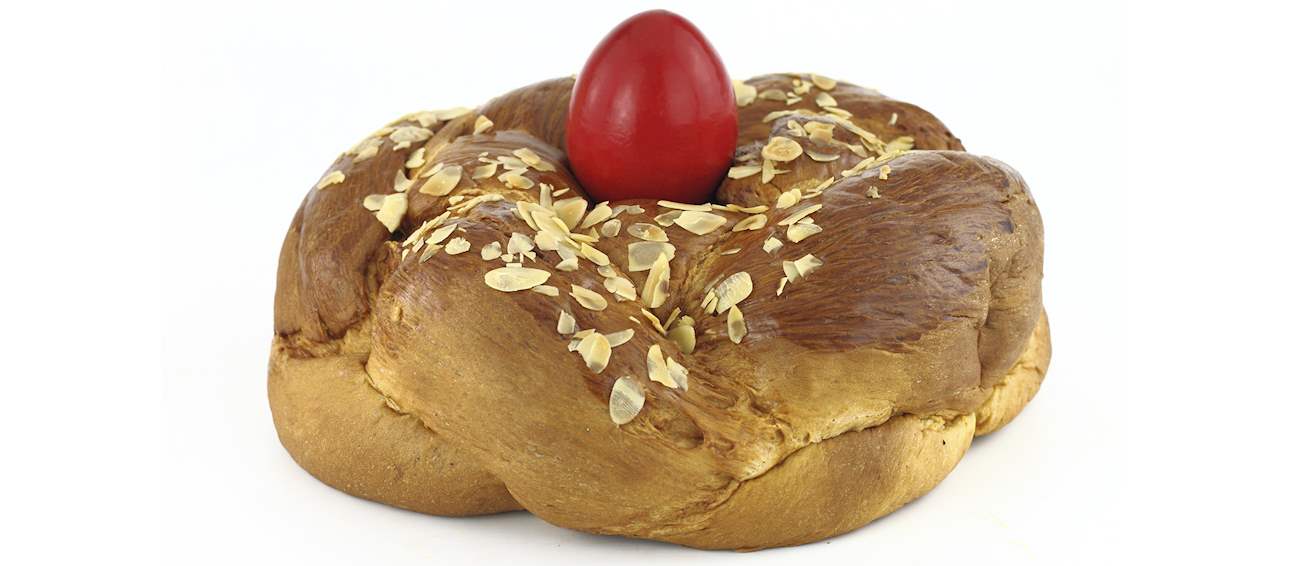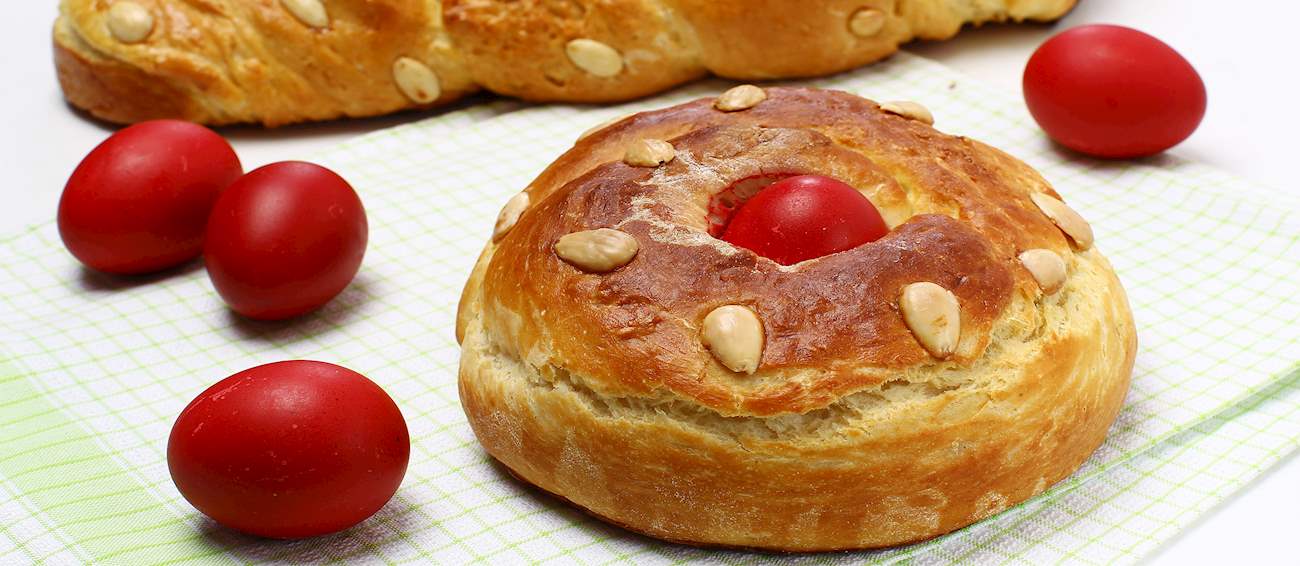OR
Already have an account? Log in
OR
Tsoureki
(Tσουρέκι)
Tsoureki is a traditional Easter bread characterized by its braided shape, which can be either circular or elongated like a loaf. Tradition says that tsoureki should be braided in three strands - one for each aspect of the Trinity. The bread is usually made with milk, eggs, butter, and flavorings such as mahleb, orange zest, cardamom, and vanilla.
After baking, it should be moist, tender, and soft, yet chewy. It is often served with a red-dyed egg on top of it, although it can sometimes be baked together with scarlet-colored eggs, representing the blood of Christ and resurrection. Tsoureki has been prepared in Greece since ancient times, and is traditionally served at the breaking of Lent.
Loaves of tsoureki are typically exchanged among Greeks on Easter Sunday as a sign of good will and friendship. Today, there are numerous variations of the bread in Turkey, Armenia, Romania, and Bulgaria, all of them especially good when paired with a hot cup of tea or coffee.













